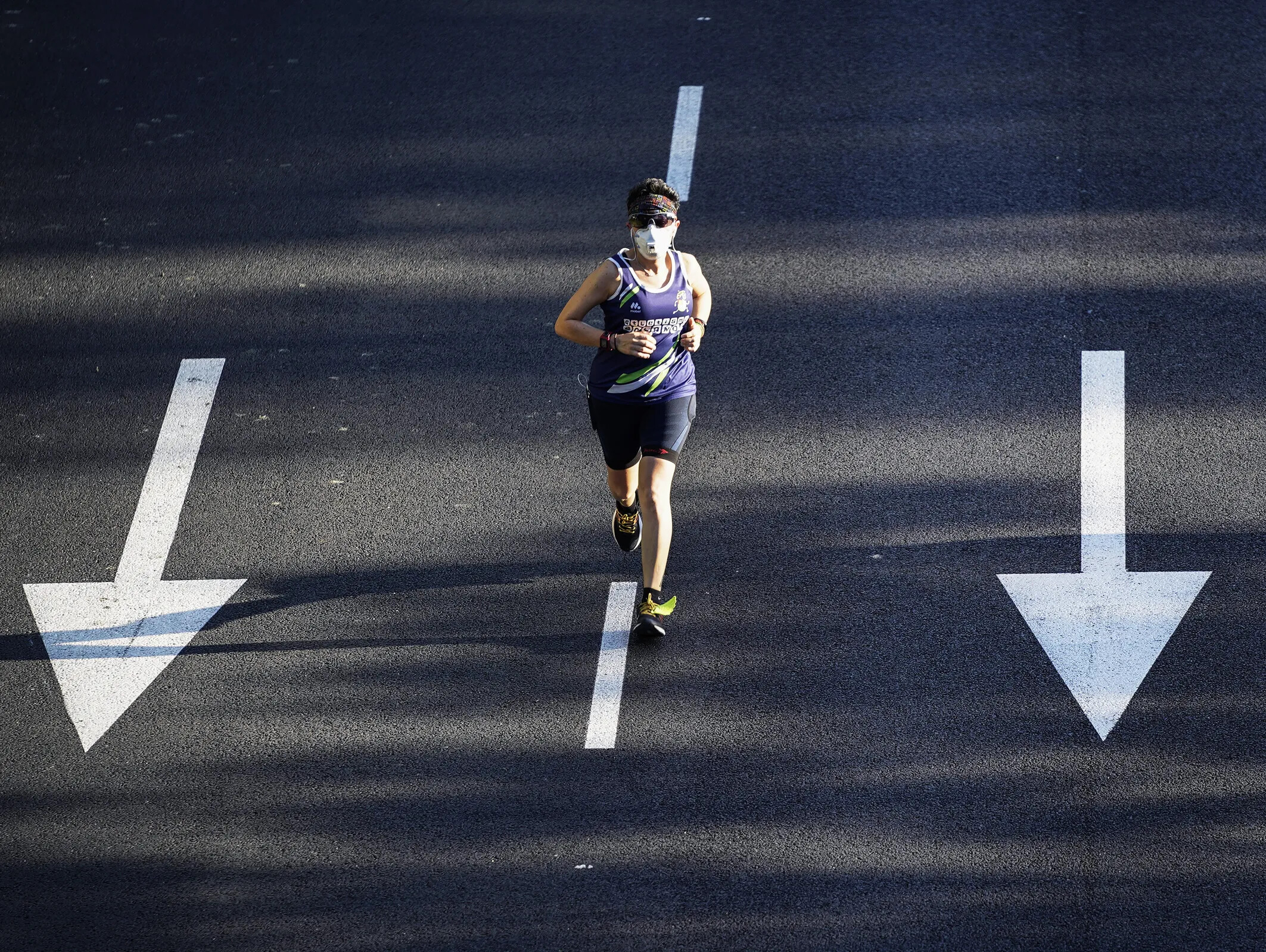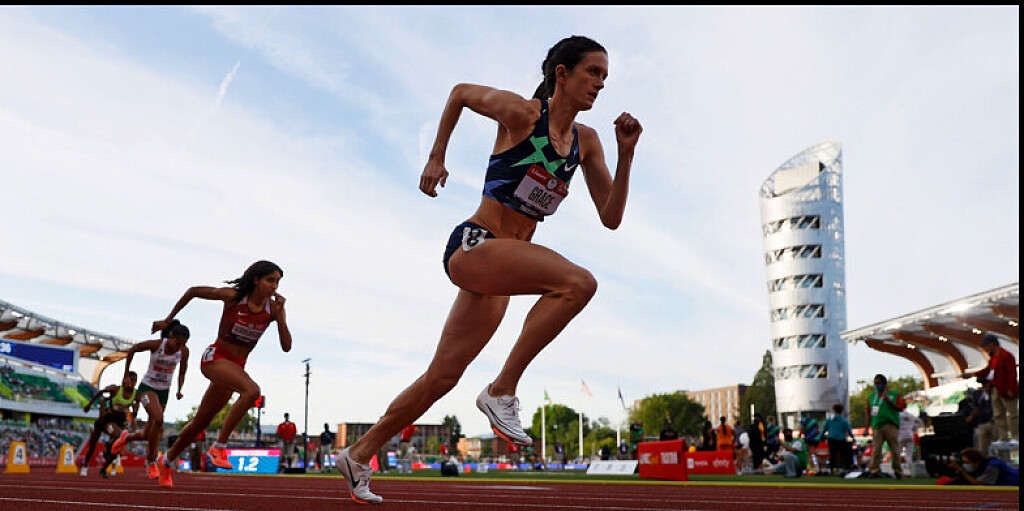Running News Daily
Running News Daily is edited by Bob Anderson. Send your news items to bob@mybestruns.com Advertising opportunities available. Train the Kenyan Way at KATA Kenya and Portugal owned and operated by Bob Anderson. Be sure to catch our movie A Long Run the movie KATA Running Camps and KATA Potato Farms - 31 now open in Kenya! https://kata.ke/
Index to Daily Posts · Sign Up For Updates · Run The World Feed
7 Keys to Recovery From an Elite Runner Who Experienced Long COVID
Kate Grace, an 800-meter specialist who ranked third in the world in 2021, is taking a slow road back to competition.
At first, the COVID symptoms Kate Grace experienced at the end of December 2021 seemed mild enough. She had a sore throat and fever and felt tired. That turned into a cold, which gradually eased over the next several days. And because she had been vaccinated and had a booster shot, she didn’t expect any lasting complications. Within two weeks, the 800-meter specialist, a 2016 Olympic finalist, was back to running.

But in January, she began to notice she was struggling in training. She was pushing to hit her usual 7-minute pace during easy runs, and she felt exhausted afterward. In workouts, her difficulties were even more stark. “Paces that should have been pedestrian for me were an all-out effort,” she told Runner’s World. Grace, 33, had had a terrific 2021 track season, setting PRs in the 800 meters (1:57.20) and 1500 meters (4:01.33) and finishing in the top 3 in six of seven Diamond League meets she ran, with three victories. She couldn’t wait for the 2022 season, with the World Championships set to take place in July in Eugene, Oregon, the first time the meet will be held in the United States.
“I was just so excited about getting back to races, I think I pushed myself way too hard,” she said. “In my intense desire to get back into shape, I wasn’t patient. I didn’t listen to the fact that my body was not cooperating.”
After about three weeks, she realized the struggles she was having were out of the ordinary. She stopped trying to train. Her body, she said, “kind of shut down.”
Her primary symptom was crushing fatigue. One easy activity—making lunch, for instance—exhausted her for the rest of the day. Other symptoms included dizziness when she stood up, poor sleep, and excessive sweating. She would have to rest after she climbed the stairs in her Boulder, Colorado, home, because her heart rate would soar. Her feet turned purple in the mornings when she stood up, and she had brain fog.
The U.S. Olympic and Paralympic Committee put Grace in touch with doctors in Denver, who tested her heart and lungs—which checked out fine, with no sign of myocarditis—and confirmed she was experiencing classic long COVID symptoms. They told her there was nothing to do but rest.
That’s what she did. For 10 weeks, Grace did no running, cross-training, or lifting. She did start taking walks—just around the block at first, and she’d need a nap afterward. But over the weeks, those walks gradually grew to an hour. From those, she moved to hiking to get her heart rate up. Then short runs.
Now she’s back to running an hour a day. She’s still slower than she used to be on her easy runs, but she’s improving rapidly. It’s too soon to tell whether Grace will be able to have any kind of racing season in 2022, but she’s relieved to have her normal life and energy back.
“I literally cried on my first run,” she said. “I ran for 20 minutes at 10-minute pace. I was so happy. To be able to go and run and move my body and feel normal afterward, yeah, I laughed and cried. It was amazing.”
Grace struggles to convey how she felt during the worst days. “The fatigue was like nothing I’ve ever experienced,” she said. “I feel like I went to sleep in December and woke up in April. I did nothing. I couldn’t look at my phone. Weeks passed, and I don’t even know what happened. I was like a gray ghost of myself.”
Her physical symptoms were compounded by fear of not knowing when she would ever feel like herself again. Forget about her racing—she just wanted her life back.
Here is what she has learned so far in the process of her recovery—and what she wants other runners who have had COVID to know about coming back.
Rest and be patient. Grace advises anyone who has had COVID to take an extra week or two off before trying to run again, and then to start back to running very conservatively. She doesn’t know for sure if she made herself worse by trying to run before she was fully recovered, but she certainly didn’t help matters. “It’s way more prudent to wait and let yourself heal,” she said. “It’s always a possibility to have a delayed reaction to illness.” Post-viral syndrome is something that happens with other illnesses, such as mononucleosis or the flu. With COVID, too, it’s possible to fall into deep fatigue and need a long time to recover.
Don’t let your identity as a runner obscure what your body needs. Be appropriately humble. Respect the illness. “Just because you are a healthy, in shape person, you’re still human, your body still needs rest,” she said. “You still need time to recover.” Pushing through is counter productive.
One day your body will work for you again the way you expect it to, if you give it what it needs. But it might happen on a very different schedule than you had planned.
Take the timeline pressure off. You have a target race on the calendar? Let it go. Defer your entry, if possible, or transfer the bib to a friend if the race allows it. You will race again, just maybe not when you thought. And fretting about it won’t help.
Grace credits her coach, Joe Bosshard, with telling her to stop worrying about her track season. Every day that she didn’t feel better, she said she would “freak out” about how her season was slipping away. That stress would slow her recovery. “We have to reset mentally,” Grace said Bosshard told her. “Don’t think about races. Let yourself be calm and heal. When that happens, we can revisit racing plans.”
Walk before you run. Runners tend not to count walking as exercise, but a week or two of walking can help runners transition back into their primary activity. As Grace got better and faster at walking, she progressed to hiking.
While physically the walks helped prepare her body for running again, they also served an important psychological purpose. “I had lost confidence in my body,” she said. “I needed to prove myself I could get my heart rate up and not fall back into the hole.” Walking felt less likely to set her back than running, and when her walks went well, she started to lose the fear she felt around running.
Invest in a heart rate monitor. Grace now wears a Polar heart rate monitor and has been very careful so far not to overdo it. Otherwise, she’d likely be worried about her pace. When she started her short walks, she kept her heart rate to only about 50 percent of her maximum heart rate. With hiking, she got up to about 60–65 percent of her max. With her first few runs, she didn’t exceed 70 percent of her max and she wanted to make sure she could recover from those runs without excessive fatigue. Now she runs at between 70–85 percent of her maximum heart rate.
Everyone’s COIVD experience is different. Even though Grace knew plenty of people who had had COVID, she didn’t know any athletes who had suffered from long COVID. So the first few weeks back to running, when she was struggling, it didn’t even dawn on her that her issues were related to the virus.
When she realized she had long COVID, at first she spent long hours searching on social media and message boards for stories of people who had recovered. And she couldn’t find them. (It makes sense, she said. When you get better, you stop visiting the message boards.) But when she posted on her Instagram account on February 13 about her long COVID symptoms, she did hear from a few people who told her they had gotten better, which was helpful. “That was the one time I was thankful for Instagram,” she said. She stayed largely unplugged after that post. Comparing her recovery to others’ didn’t help.
Tell your support team what’s going on. Grace went through a particularly hard three-week stretch when she was scared, confused, and emotional. “I would wake up, feel crappy and tired, and would start crying on my kitchen floor,” she said.
Her fiancé, Patrick, knew what was happening, but she clued in her family and her teammates training under Bosshard about how sad and worried she was feeling. Emma Bates, in particular, was helpful, inviting her over, but understanding when Grace declined. “They made me feel included but very low-impact stuff,” she said. “Check-ins like that were meaningful.” Thanks to her strong network, there was one symptom that never appeared on Grace’s list: isolation.
by Runner’s World
Login to leave a comment




